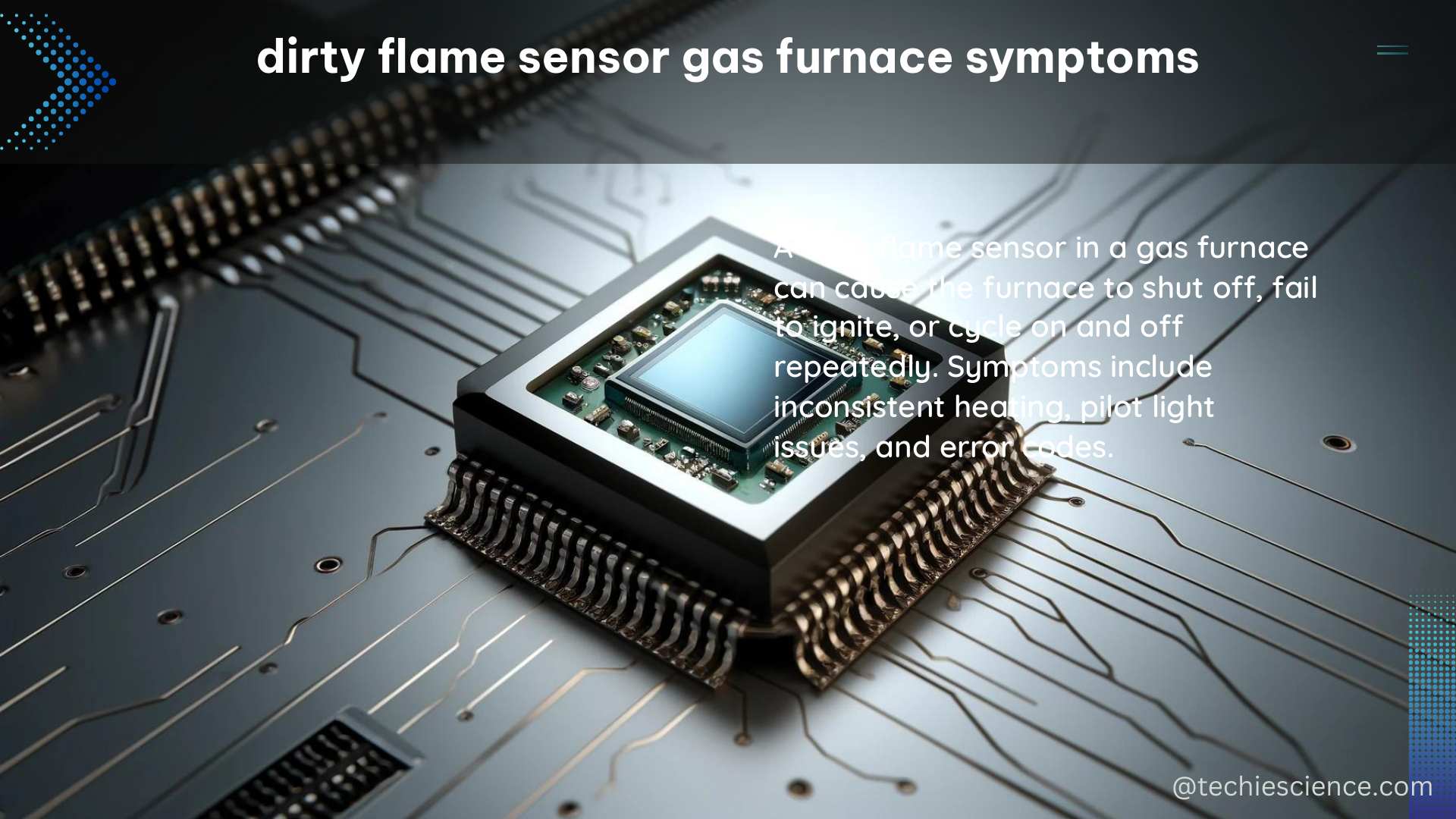Dirty flame sensor symptoms in a gas furnace can include a range of issues, from yellow burner flames to high utility bills and constant thermostat adjustments. These symptoms are indicative of problems with the furnace’s venting, gas combustion, or overall efficiency. A dirty flame sensor can cause the furnace to short cycle, turn on and off quickly, or not ignite at all, posing a potential safety hazard for the household.
Understanding the Flame Sensor
The flame sensor is a critical safety feature in gas furnaces, ensuring the unit has a burning flame within the burner assembly. It generates a small electrical current to detect the presence of a flame as soon as the furnace’s gas valve opens. If the flame goes out, unburned natural gas or propane can seep from the furnace’s combustion chamber, creating a potentially dangerous situation.
Dirty Flame Sensor Symptoms

-
Yellow Burner Flames: One of the most common signs of a dirty flame sensor is the presence of yellow burner flames. Normally, the flames should be a vibrant blue color, indicating complete combustion. Yellow flames suggest incomplete combustion, which can be caused by a dirty or malfunctioning flame sensor.
-
Rusted Flue Lines: Over time, a dirty flame sensor can lead to the buildup of soot and debris in the furnace’s flue lines, causing them to rust and deteriorate. This can result in poor venting, which can further exacerbate the combustion issues.
-
High Utility Bills: A dirty flame sensor can reduce the overall efficiency of the gas furnace, leading to increased energy consumption and higher utility bills. This is because the furnace has to work harder to maintain the desired temperature, consuming more fuel in the process.
-
Old Age: As a gas furnace ages, the flame sensor can become increasingly susceptible to accumulating dirt and debris, especially if the furnace has not been properly maintained. Furnaces older than 10-15 years may be more prone to flame sensor issues.
-
Exhaust Smells: A malfunctioning flame sensor can cause incomplete combustion, leading to the release of unburned fuel and the associated odors. If you notice a strong, unpleasant smell coming from the furnace’s exhaust, it may be a sign of a dirty or faulty flame sensor.
-
Constant Thermostat Adjustments: A dirty flame sensor can cause the furnace to short cycle, turning on and off more frequently than normal. This can result in inconsistent heating, forcing the homeowner to constantly adjust the thermostat to maintain a comfortable temperature.
-
Furnace Not Igniting: In severe cases, a dirty or malfunctioning flame sensor can prevent the furnace from igniting altogether. This can be a dangerous situation, as it can lead to the buildup of unburned gas in the combustion chamber.
Cleaning the Flame Sensor
To clean a dirty flame sensor, follow these steps:
- Turn off the heating system and locate the flame sensor, which is typically a metal rod near the burner assembly.
- Unfasten the flame sensor by loosening the screw or bolts that hold it in place, and disconnect its wiring.
- Use a light-grit sandpaper to gently remove any soot or debris from the metal rod. Be careful not to damage the sensor.
- Reattach the sensor and reconnect the wiring.
- Turn on the furnace and let it run to test the sensor.
If the flame sensor is cracked or broken, it should be replaced instead of cleaned. A faulty flame sensor can lead to incomplete combustion, carbon monoxide leaks, and potential explosions.
Preventive Maintenance
Regular maintenance and cleaning of the flame sensor can help prevent the issues described above and ensure the safe and efficient operation of the gas furnace. It is recommended to have a professional HVAC technician inspect and clean the flame sensor during the annual furnace tune-up.
Conclusion
Dirty flame sensor symptoms in a gas furnace can range from yellow burner flames to high utility bills and constant thermostat adjustments. Understanding these symptoms and taking proactive steps to maintain the flame sensor can help ensure the safe and efficient operation of your gas furnace. Remember, if the flame sensor is damaged, it should be replaced to avoid potentially dangerous situations.
References:
- 6 Signs That the Flame Sensor in Your Furnace Has Gone Bad
- Bad Flame Sensor on Furnace
- 3 Symptoms of a Bad Flame Sensor & What to Do

The lambdageeks.com Core SME Team is a group of experienced subject matter experts from diverse scientific and technical fields including Physics, Chemistry, Technology,Electronics & Electrical Engineering, Automotive, Mechanical Engineering. Our team collaborates to create high-quality, well-researched articles on a wide range of science and technology topics for the lambdageeks.com website.
All Our Senior SME are having more than 7 Years of experience in the respective fields . They are either Working Industry Professionals or assocaited With different Universities. Refer Our Authors Page to get to know About our Core SMEs.